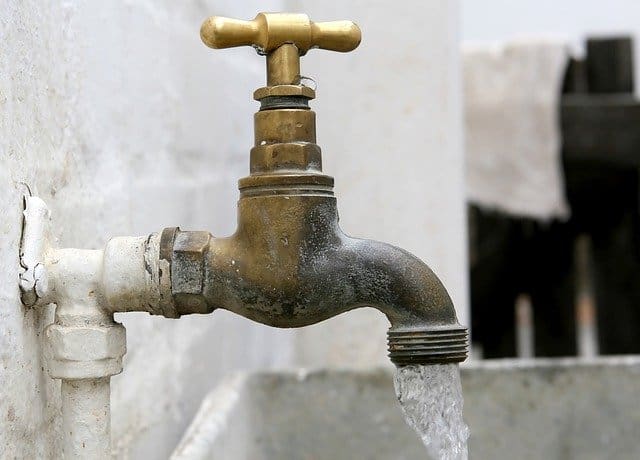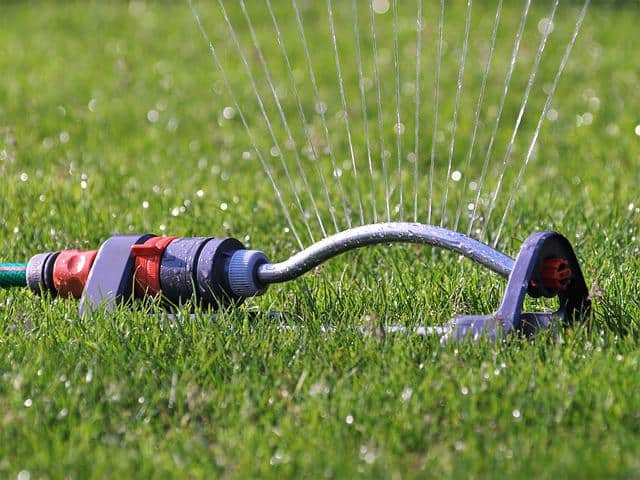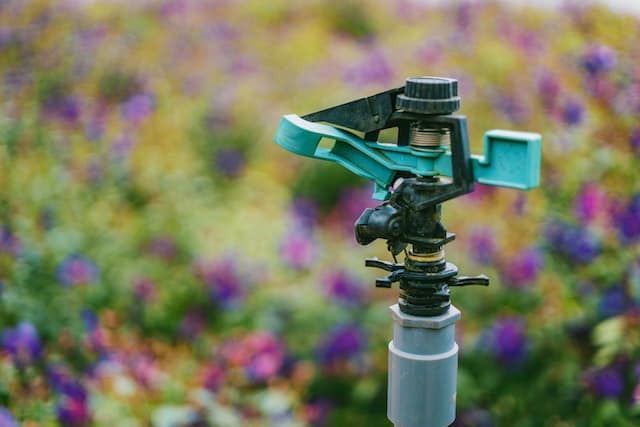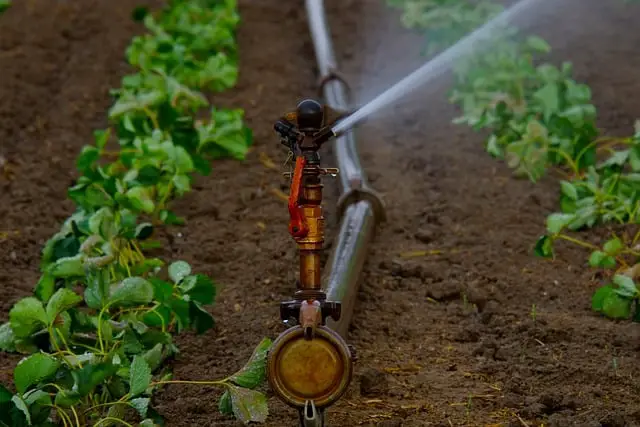The Sprinkler valves are one of the most vital components of your sprinkler or lawn irrigation system. They enable you to control the flow of water that supplies your lawn or yard with the nutrients they need to grow and survive.
A broken or malfunctioning Sprinkler valve may cause your lawn to suffer due to inadequate or improper watering. Because of their importance, many people want to know how long do Sprinkler Valves last before needing replacement.
Regularly checking and inspecting your Sprinkler valves and making sure they are in good working condition can help reduce the chances of your valves needing early replacement.
Sprinkler Valves usually last you about 10 to 15 years of service before they break down. However, Sprinkler valves can fail over time because of improper use and malfunction due to poor maintenance or manufacturer’s defects.
How Long Do Sprinkler Valves Last?

As mentioned above, a sprinkler valve usually lasts about 10 to 15 years before it fails and needs replacement. However, If not properly taken care of, Your Sprinkler Valves can break down before their estimated lifetime.
So to ensure that it remains functional and works for a long time, you will need to conduct regular maintenance and check its various components to ensure everything is working correctly.
To do this, you will need a better understanding and familiarity with the components that make up a sprinkler valve to perform proper maintenance and provide the knowledge required to troubleshoot problems and issues when they arise.
Generally, there are five primary components to a Sprinkler Valve. Knowledge and information about these Sprinkler valve components will enable you to know when any of them fails or becomes compromised so you can determine whether a component needs to be repaired or replaced to prolong the use and life of your Sprinkler valves.
So, to help you out, here are the 5 primary components of a Sprinkler valve that you should learn to properly determine how long your Sprinkler Valves can last before needing replacement.
Five Primary Components of a Sprinkler Valve
1. Inlet Connection
The inlet pipe is the component that brings water to the valve from your primary water source so it can distribute the water to the sprinkler heads that it connects to.
If the Inlet connection becomes loose, there will be a leak at that section. And it will cause your sprinkler valve to operate with insufficient water pressure.
This results in inadequate water being distributed to the area of your sprinkler system. Furthermore, it can cause your valve’s sprinkler heads located far away from the valve to malfunction.
2. Outlet Connection

The outlet connection distributes the water from your outlet pipe to your sprinkler heads. A faulty connection or leak at this component will result in inadequate water pressure being delivered to your sprinklers, similar to what happens when you have a defective inlet connection.
3. Valve Cover or Bonnet
The valve cover is commonly referred to as the “bonnet.” This component is the prominent round cap located at the top of your sprinkler valve. The bonnet could be flat or slightly rounded, depending on the type of model of your valve.
This component is attached by screws or attached directly to the sprinkler valve body. It can be easily removed using adjustable pliers. This component enfolds the chamber holding the diaphragm spring and the diaphragm. It provides access to the filter separating the inlet from the bonnet chamber.
If the seal of the valve cover degrades, is damaged, or is not securely tightened, this junction can produce leaks. Furthermore, if the filter is clogged or dirty, it can impede the water flow from the inlet to the valve cover chamber.
When this happens, It can cause the chamber not to pressurize appropriately. It may also affect the diaphragm from adequately closing, causing the water to flow into the outlet, supplying water to the sprinkler heads even when it is supposed to be closed.
4. Solenoid
The solenoid component is the sizeable tubular unit, usually dark or black colored, located near the outlet end of the valve. It controls the water flow from your sprinkler valve’s inlet and the bonnet chamber section to the outlet section.
The solenoid contains a separate chamber within called the plunger well. It is an electric coil surrounded by the walls of the chamber.
It is a metallic plunger unit within the chamber and a rubber gasket connected to the lower end of the chamber. It keeps water from the valve cover chamber from going out to the outlet section.
The solenoid’s coil is magnetized whenever an electric current is run through it, causing the plunger rod to rise. When this occurs, it creates an opening for the water in the valve cover chamber to flow out into the outlet section.
It eliminates the pressure on the diaphragm and enables the water to flow freely from the inlet to your sprinkler valve’s outlet section, which produces pressure to the feeder line to your sprinkler heads.
5. Diaphragm

Lastly, the diaphragm of a sprinkler valve is the large rubber seal at the bottom of the valve cover chamber. When water flows through into it correctly from the inlet valve, the water pressure within the valve cover chamber bears down on the seal, which stops the flow of water into the outlet.
What are the signs that your Sprinkler Valve Needs Repair or Replacement?
Now that we have learned about the five primary components of a Sprinkler Valve, it will be easier for us to determine how our sprinkler valves work. We now know how to maintain them properly and conduct simple repairs.
Now to know whether our Sprinkler valve needs repair or replacement, here are some common signs that a primary component is faulty and requires maintenance, repair, or replacement.
Signs that your Inlet Connection is Faulty
The most common problem informing you that your inlet connection is faulty is when there is an accumulation of water in your valve box. This problem causes your valve box to flood or even overflow.
In addition, Another sign that will tell you that you have a faulty inlet connection is when there is less water pressure emanating from the sprinkler heads that are located further away from your sprinkler valve.
Furthermore, You might also experience the build-up of puddles around your sprinkler heads.
It may be due to inadequate water pressure in your valve, which causes it not to seal off properly when turned off. This problem can render your sprinkler valve to release water through the outlet and into your sprinkler heads. Creating puddles of water in those areas when the system was meant to be turned off.
Signs that your Outlet Connection is Faulty
Similarly, when your Outlet Connection is faulty, you will experience the same signs described above for a faulty inlet connection.
To distinguish if the fault is caused by an outlet or inlet connection, you will need to find the presence of visible leaks from either the inlet or outlet connection, which will tell you where the problem is from.
But, If you cannot visually determine between the two because the leak is minimal or infrequent, then you can place a piece of rag or cardboard underneath each connection to determine which component is causing the problem.
Identifying the presence of dampness on either the outlet, inlet rag, or cardboard will enable you to decide which one is to blame.
Signs that your Valve Cover or Bonnet is Faulty

Here are some things that may inform you that you have a faulty valve cover or bonnet
- Rust on the screws attaching the valve cover to the body of the Sprinkler valve
- Moisture or water accumulating in the area immediately below the valve cover
- Noticing trickles of water on your sprinkler heads when it is shut off
- Your Sprinkler heads do not shut off
- Noticing Insufficient water pressure with your sprinkler heads
Signs that you have a Faulty Solenoid
Your Sprinkler heads not producing water when you turn it on may be a sign that the plunger rod in your solenoid is not rising to allow the flow of water from the valve cover to the outlet.
Wiring issues may cause this problem, insufficient current reaching the solenoid, or an accumulation of debris or dirt in the plunger well.
In addition, Your sprinkler head not shutting off can indicate a problem that can be due to the solenoids plunger not dropping down or the gasket at its tip is not sealing correctly.
Signs that your Diaphragm is Faulty
Suppose your Sprinkler valve diaphragm does not produce an adequate seal. It will allow the outlet to send water to your sprinkler heads even when shutting off. Furthermore, it can also cause your sprinkler head not to turn off immediately when turned off, or it can also cause dribbling sprinkler heads.
Things You Need to Do before Fixing Your Sprinkler Valve That Is Going Bad
If you encounter any of the issues that we mentioned above with your Sprinkler Valve, then you need to perform the following before you try to fix or troubleshoot the problems with your Sprinkler Valve
It would be best if you shut off the water supply of the sprinkler valve that you are trying to fix.
You can perform this by turning off the entire water supply to your house from the main shut-off valve. Alternatively, if your sprinkler system is equipped with a manifold shut-off valve or an independent shut-off valve, you should turn that off.
Turn off the power of your sprinkler valve
The solenoid of your sprinkler valve needs current to operate. So, before you open any part of your sprinkler valve, especially the solenoid, you must ensure that you shut off the power that feeds it to avoid an accident.
Prepare the required tools needed

To fix or troubleshoot issues with your Sprinkler valve, you must prepare the necessary tool, which usually consists of a screwdriver, pliers, and adjustable wrench. Opening your sprinkler valve to access its primary components is not that complicated. You just need to know and identify the interior components to repair it.
Suppose your troubleshooting job or repair involves replacing components or PVC pipes. In that case, we strongly suggest you purchase and prepare the replacement pieces with the correct sizes and the PVC cement needed to eliminate any problems when troubleshooting or repairing your Sprinkler Valve.
Also read: How To Keep The Sprinkler Valve Box Dry
Final thoughts About How Long Do Sprinkler Valves Last?
Due to the importance of the Sprinkler Valve to your irrigation system, a lot of people always asks about how long do Sprinkler Valves last before needing replacement.
To answer that, Sprinkler Valves usually last around 10 to 15 years before breaking down. However, Sprinkler valves can fail over time because of improper use and malfunction due to poor maintenance or manufacturer’s defects.
So to prolong the use of your sprinkler valve, it is necessary to familiarize yourself with its 5 primary components, which consist of the Inlet Connection, Outlet Connection, Valve Cover, Solenoid, and Diaphragm.
Furthermore, it is necessary to learn how each component works. You should be able to detect the signs that would tell you that a component is faulty so you can provide the proper care and maintenance needed to prolong the life of your Sprinkler valve.
Frequently Asked Questions
How do I know if my sprinkler valve is bad?
In addition to the information we have provided about the Signs that your Sprinkler Valve Needs Repair or Replacement. Here are other information that would enable you to know that there is something wrong with your sprinkler valve:
– Water from your Sprinkler system is not turning off
– Water leaks
– You notice some broken Sprinkler Head
– Your Valve is stuck
– Irregular Watering
– Wiring problems
Do sprinkler valves wear out?
Like any other component in your sprinkler system, your Sprinkler valves can go bad even when properly maintained and taken care of.
What is the life expectancy of a sprinkler system?
While different parts of your system may need replacing throughout its lifetime, you can typically expect your average sprinkler system to last for 20 years and above.

Hey, I’m Lisa and I’ve been an avid gardener for over 30 years. I love writing, talking and living in the garden! Feel free to connect with me on my socials below

